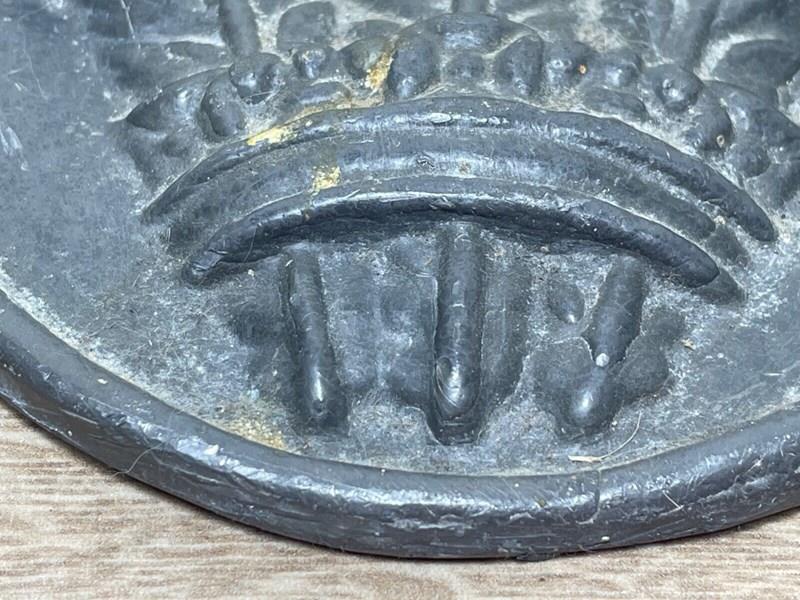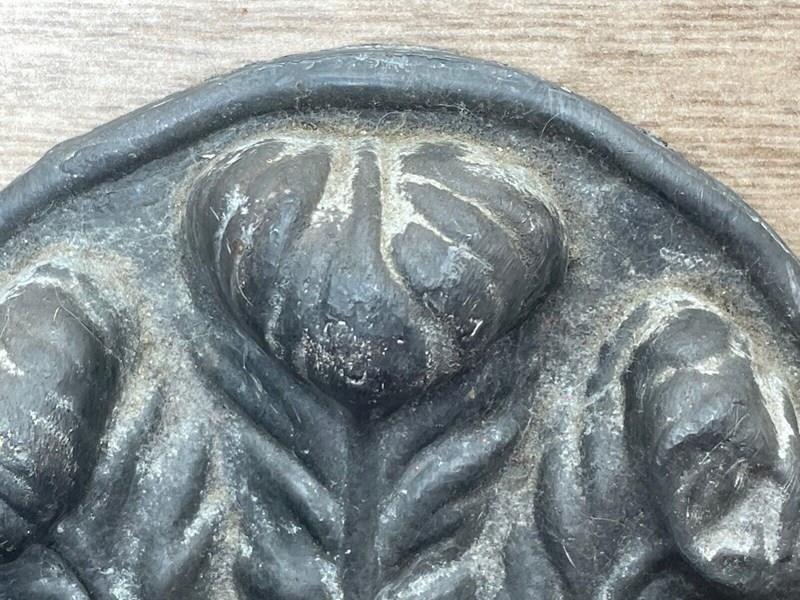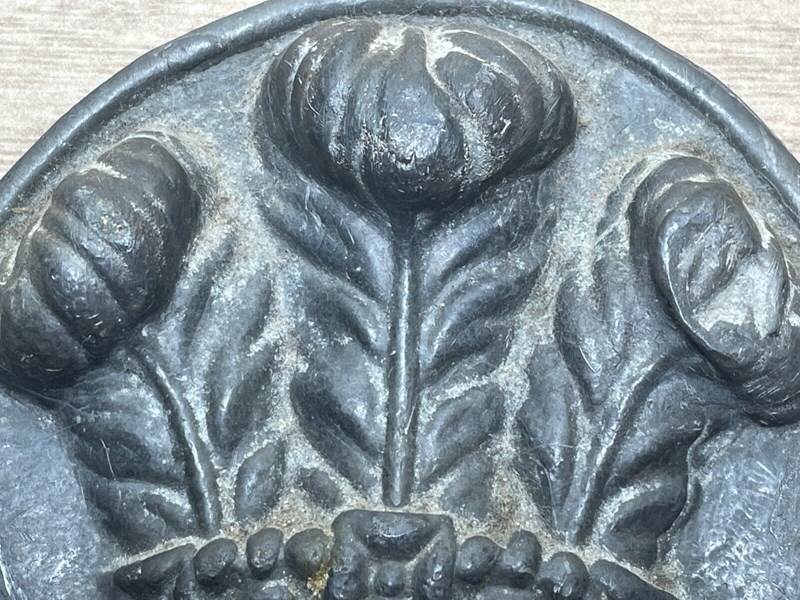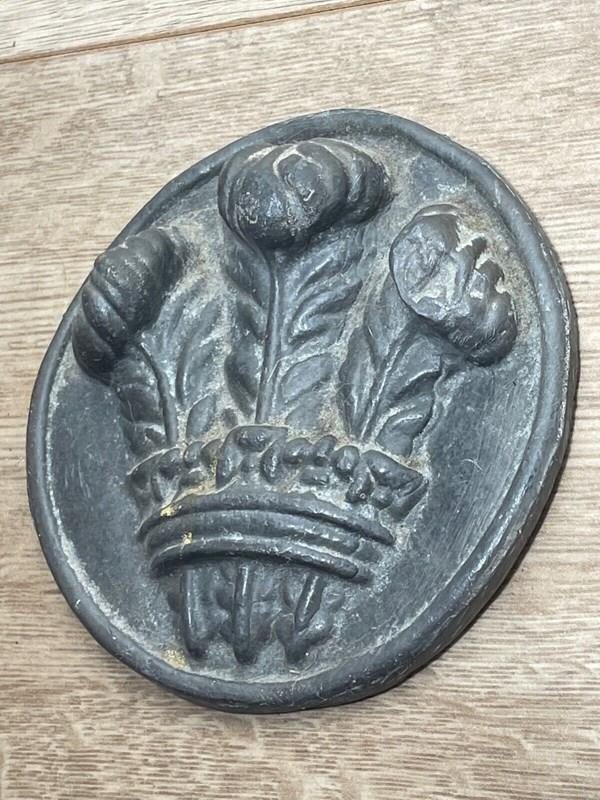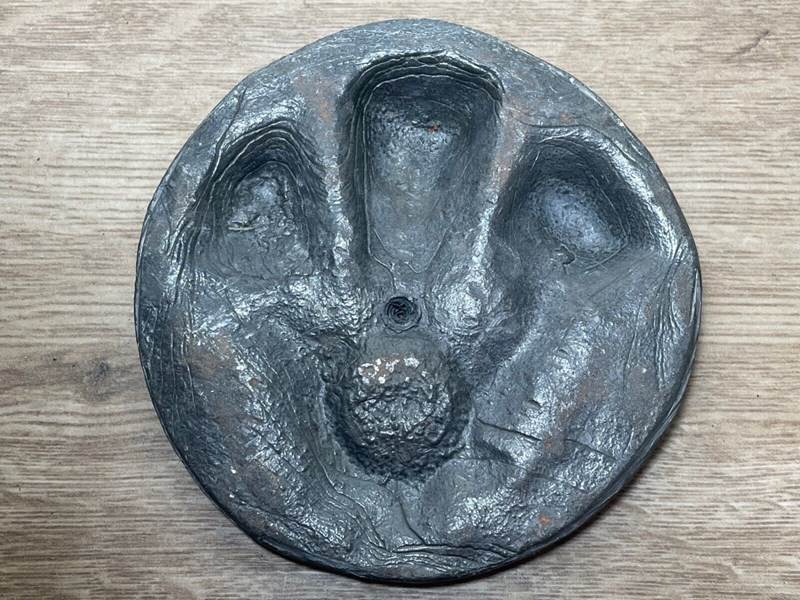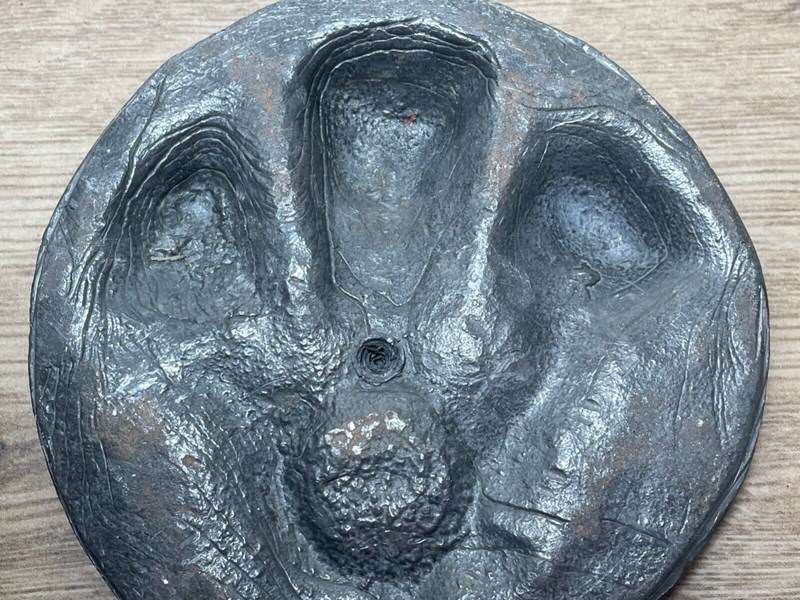19Th Century Royal Coat Of Arms Prince Wales Lead Heraldic Plaque
Stock No
CACL414
2023
Questions about this item?
Like this item?
Item Description
Small 19th Century British Lead Royal Coat Of Arms Prince Of Wales Wall Plaque Emblem.
The Prince of Wales's feathers is the heraldic badge of the Prince of Wales.
It consists of three ostrich feathers emerging from a coronet.
With a ribbon below the coronet.
The Prince of Wales's feathers is the heraldic badge of the Prince of Wales.
It consists of three white ostrich feathers emerging from a gold coronet.
A ribbon below the coronet bears the motto Ich dien (German: [ɪç ˈdiːn], "I serve").
As well as being used in royal heraldry, the badge is sometimes used to symbolise Wales, particularly in Welsh rugby union and Welsh regiments of the British Army.
The badge has no connection with the native Princes of Wales.
Its use is generally traced back to Edward, the Black Prince (1330–1376), eldest son and heir apparent of Edward III of England.
Edward bore (as an alternative to his differenced royal arms) a shield of Sable, three ostrich feathers argent, described as his "shield for peace", probably meaning the shield he used for jousting.
These arms can be seen several times on his chest tomb in Canterbury Cathedral, alternating with his royal arms the royal arms of King Edward III differenced by a label of three points argent.
The prince also used badges of one or more ostrich feathers in a number of other contexts.[3]
The feathers had first appeared at the marriage of Edward III to Philippa of Hainault, and it is therefore likely that the Black Prince inherited the badge from his mother.
Philippa was descended from the Counts of Hainault, whose eldest son bore the title "Count of Ostrevent", the ostrich French: autruche, old French spellings including ostruce feathers being perhaps a heraldic pun on that name.
Alternatively, the badge may have derived from the Counts of Luxembourg, from whom Philippa was also descended, and who had used the badge of an ostrich.
Sovereygne" ostrich feather badge used by Henry IV
Edward III occasionally used ostrich feather badges, as did other members of the royal family in the 14th and 15th centuries.
The Black Prince's younger brother, John of Gaunt, used ostrich feathers in several contexts, including on a shield very similar to Edward's "shield for peace", although in this case the feathers were ermine.
Edward's illegitimate son, Sir Roger de Clarendon, bore arms of Or, on a black bend, three ostrich feathers argent; and his legitimate son, King Richard II, used ostrich feather badges in several colours.
Henry IV used a badge of a single ostrich feather with a scroll entwined around it bearing the motto "Ma sovereyne" or "Sovereygne"; and, of Henry's sons, Henry V used ostrich feathers as a secondary royal badge at various times.
Thomas, Duke of Clarence used an ermine ostrich feather labelled; John, Duke of Bedford an ostrich feather with the "Sovereygne" scroll; and Humphrey, Duke of Gloucester an ostrich feather studded with fleurs-de-lis.
Similar badges were used by other royal princes.
The first Prince of Wales to use the badge in its modern form i.e. three white feathers encircled by a coronet, and with the motto Ich dien was Prince Arthur (1486–1502), eldest son of Henry VII, at the beginning of the 16th century.
It was also widely used by Prince Edward, son of Henry VIII and afterwards Edward VI, although he was never formally invested as Prince of Wales.
Feathers continued to be used as lesser royal badges, by Elizabeth I among others, until the end of the century.
Only from the beginning of the 17th century did the badge become exclusively associated with the Prince of Wales.
It is has been a part of the coat of arms of the Prince of Wales since at least 1901.
Circa late 19th century.
Screw hole drilled on the back, screws are not included.
Condition report.
Offered in fine charming old used condition.
Having some noticeable wear commensurate with usage & age.
International shipping worldwide is available.
Checkout our other exciting listings available in our shop gallery.
Dimensions in centimetres approximate
High (12.5cm)
Width (12.5cm)
Length thickness (2cm)
Item Info
Seller Location
Covent Garden, London
Item Dimensions
H: 12.5cm W: 12.5cm D: 2cm
Period
Late 19th century
Item Location
United Kingdom
Seller Location
Covent Garden, London
Item Location
United Kingdom
Seller Contact No
+44 (0)7494 763382
More from CHESHIRE ANTIQUES CONSULTANT LTD



